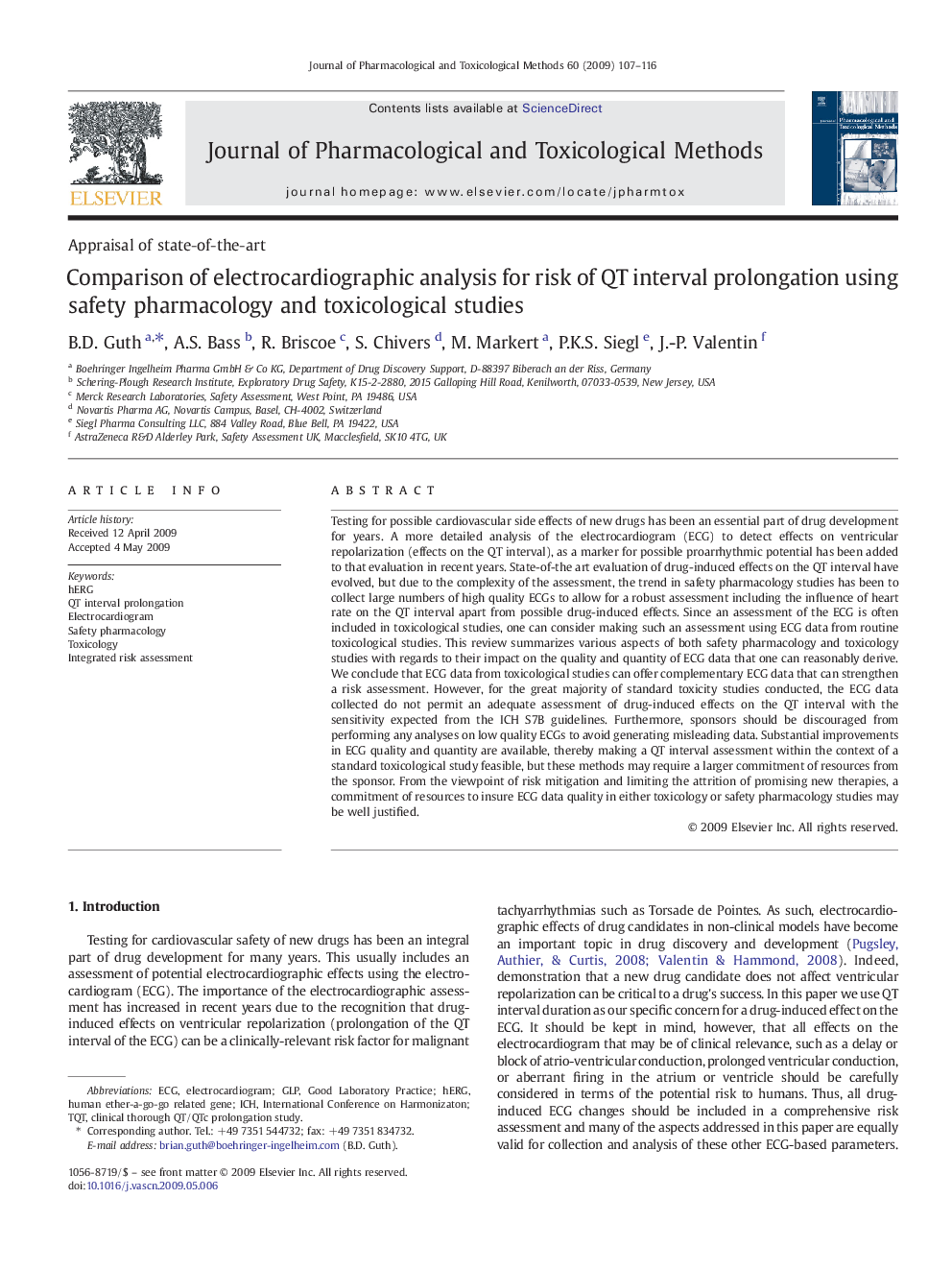| کد مقاله | کد نشریه | سال انتشار | مقاله انگلیسی | نسخه تمام متن |
|---|---|---|---|---|
| 2550117 | 1124539 | 2009 | 10 صفحه PDF | دانلود رایگان |

Testing for possible cardiovascular side effects of new drugs has been an essential part of drug development for years. A more detailed analysis of the electrocardiogram (ECG) to detect effects on ventricular repolarization (effects on the QT interval), as a marker for possible proarrhythmic potential has been added to that evaluation in recent years. State-of-the art evaluation of drug-induced effects on the QT interval have evolved, but due to the complexity of the assessment, the trend in safety pharmacology studies has been to collect large numbers of high quality ECGs to allow for a robust assessment including the influence of heart rate on the QT interval apart from possible drug-induced effects. Since an assessment of the ECG is often included in toxicological studies, one can consider making such an assessment using ECG data from routine toxicological studies. This review summarizes various aspects of both safety pharmacology and toxicology studies with regards to their impact on the quality and quantity of ECG data that one can reasonably derive. We conclude that ECG data from toxicological studies can offer complementary ECG data that can strengthen a risk assessment. However, for the great majority of standard toxicity studies conducted, the ECG data collected do not permit an adequate assessment of drug-induced effects on the QT interval with the sensitivity expected from the ICH S7B guidelines. Furthermore, sponsors should be discouraged from performing any analyses on low quality ECGs to avoid generating misleading data. Substantial improvements in ECG quality and quantity are available, thereby making a QT interval assessment within the context of a standard toxicological study feasible, but these methods may require a larger commitment of resources from the sponsor. From the viewpoint of risk mitigation and limiting the attrition of promising new therapies, a commitment of resources to insure ECG data quality in either toxicology or safety pharmacology studies may be well justified.
Journal: Journal of Pharmacological and Toxicological Methods - Volume 60, Issue 2, September–October 2009, Pages 107–116